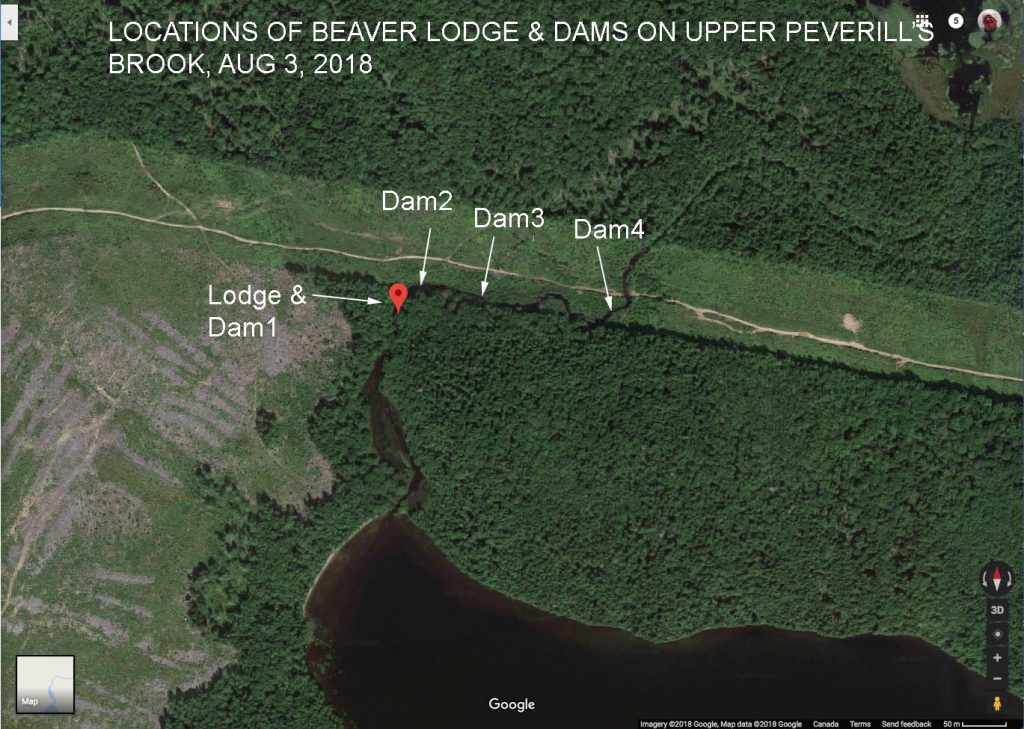From Shubenacadie Wildlife Park: Beaver
Description: Beavers are the largest rodent in North America and are recognized by their orange-enameled teeth, large flat tail, and webbed hind feet. Beavers are normally dark brown in colour and their weight varies with age, sex, and season, but most adults weigh 20 kg (44 lbs). Slow and deliberate on land, beavers are capable of walking on their hind feet, using their tail for balance, while carrying sticks or stones with their front legs. Once in the water, however, beavers are streamlined and graceful, swimming up to 7km/h (4.4mph).
Distribution and Habitat: Beavers are found across North America and are common throughout Nova Scotia. When beavers move into a small stream, they build a dam that creates a pond deep enough to keep it from freezing to the bottom. Their lodge, built in the centre of the pond, only accessible from underwater, is the beaver’s fortress: 1.8 to 2.7 m (5.9 to 8.9 ft) high and 3 to 6 m (9.8 to 19.7 ft) in diameter. Both lodges and dams are built of logs, sticks, mud, and rocks. The living area of the beaver lodge is set above the water level, and an outer covering of mud makes the lodge weather tight. In winter, the mud freezes hard and prevents predators from getting in if they manage to cross the surface ice to the lodge. Beaver dams can be maintained through the generations, for hundreds of years, if undisturbed.
Diet: Herbivores, beavers eat the bark of hardwood trees and shrubs, including trembling aspens, willows, and white birch, as well as the leaves, twigs and buds. Beavers store their winter food supply in caches underwater, allowing them access to food all winter, maintained in water temperatures similar to that of a refrigerator.
Life Cycle: Beavers are monogamous, forming breeding pairs for life. Mating occurs in January and February, with 1 to 8 young (kits) born from April to late June. Young stay with their parents for 2 years, after which they disperse and develop their own family. Their first year is spent growing, eating and playing; their second year with their family is spent helping care for the new litter of young and building/maintaining the family dam(s) and lodge. When young beavers go off on their own they are fully skilled in beaver activities.
————————————–
Beavers responsible for the high water level in Sandy Lake in the summer of 2018
Post on this website August 5, 2018
and this note on Aug 6, 2019: Falling Lake Level
Possibly related, possibly not: the lake level had dropped a lot in the last week. The resident on the west side I talked to said it had dropped by about a foot in the last week. The lifeguards showed me how much the beach had extended just since the day before, and that corresponds to a 2-3 inch vertical drop.
The lake was much higher than normal in 2018 which was attributable to beaver dams being constructed on upper Peverill’s Brook which drains Sandy Lake.
Earlier this summer, the level was lower than in 2018, with a beach re-appearing where there had been none in 2018. About 12 days ago, I was talking to a fisher who knows the lake well. He had been down to the outlet, and said the beaver dams were still there. He attributed the lower water level to lack of rain. However, the precipitous drop in water level over the past week calls for another examination of the state of those beaver dams.
UPDATE: I was told later that the dams were legally removed because of concerns about their possible effects on salmon returning to Sandy Lake.

